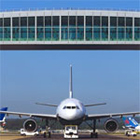Aviation bottom reached, says IATA
 Aviation traffic is falling at a slower rate as the world’s equity markets stabilise, according to latest figures released by the International Air Transport Association (IATA).
Aviation traffic is falling at a slower rate as the world’s equity markets stabilise, according to latest figures released by the International Air Transport Association (IATA).
The aviation governing body said traffic results for May showed a 9.3% drop compared to a year ago, but this as well as April have been marginally stronger than the 11.1% decline reached in March.IATA CEO, Giovanni Bisignani, said this “indicates that a floor may now have been reached.”
Freight demand was down by 17.4% year-on-year but this marked a relative improvement compared to the 21.7% drop in April. The IATA says this is one of the first physical signs of the economic recovery being anticipated in equity markets.
International passenger demand weakened from the -3.1% recorded in April to -9.3% in May. But both of the past two months have been slightly stronger than the 11.1% decline reached in March, even after adjusting for the distortions caused by the timing of Easter. This indicates that a floor may now have been reached.
“We may have hit bottom, but we are a long way from recovery,” said Bisignani. “Capacity is not aligned with demand. Passenger load factors dropped 3.3% over the last 12 months. The impact on revenue is dramatic. After a 20% fall in international passenger revenue in the first quarter, we estimate that the drop accelerated to as much as -30% in May. This crisis is the worst we have ever seen.”
ADVERTISEMENT
May was the first full month to feel the impact of swine fle on travel. Mexican carriers saw their traffic fall almost 40% in May. Latin American carriers saw their traffic decline by 9.2%.
IATA estimates that the global impact of swine flu on global travel patterns in May was a 1% drop in passenger traffic.
Asia Pacific carriers recorded a 14.3% fall in demand, driven by weakening economies and the impact of swine flu on the region with the most vivid memories of the SARS crisis.
North American carriers posted a 10.9% fall in passenger demand, considerably worse than the 4.2% fall in April, again the result of weak demand to Latin American destinations affected by swine flu along with significant recession-driven drops in both trans-Atlantic and trans-Pacific markets.
European carriers, in additional to weak long-haul markets, saw some loss of market share to European low cost carriers whose traffic grew by 2.1%, while the network carriers reported a 9.4% decline.
African carriers saw a slight improvement of a 6.0% fall in demand in May, compared to a 7.1% decline in April.
“We have lost several years of growth and yields are under severe pressure. Airlines are in survival mode. Cutting costs and conserving cash are the priorities,” said Bisignani.
“Even if we look beyond the crisis, it is difficult to see a return to business as usual. This crisis is re-shaping the industry. The burden cannot be placed on airlines alone. All partners in the value chain must be prepared to change - reducing costs and improving efficiencies. Too often we get the opposite. Already this year we have seen US$1.5 billion in cost increases from airports and air navigation service providers. It’s irresponsible in the best of times and a completely unacceptable abuse of monopoly position in a crisis,” he added.
——-

